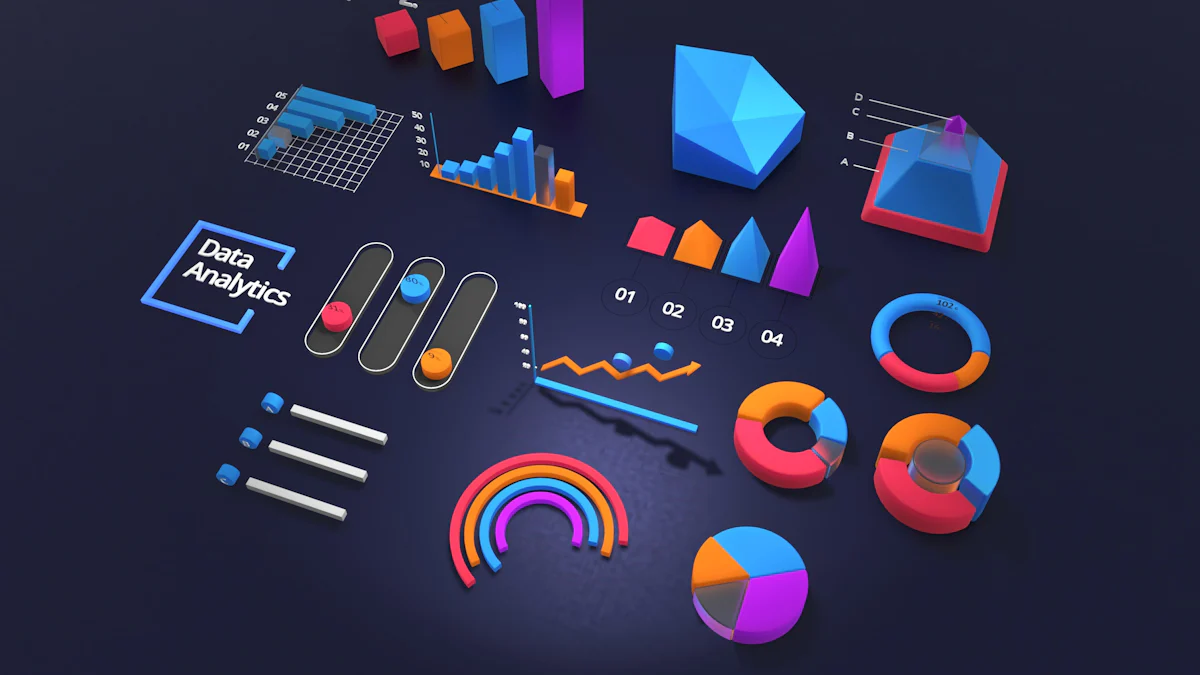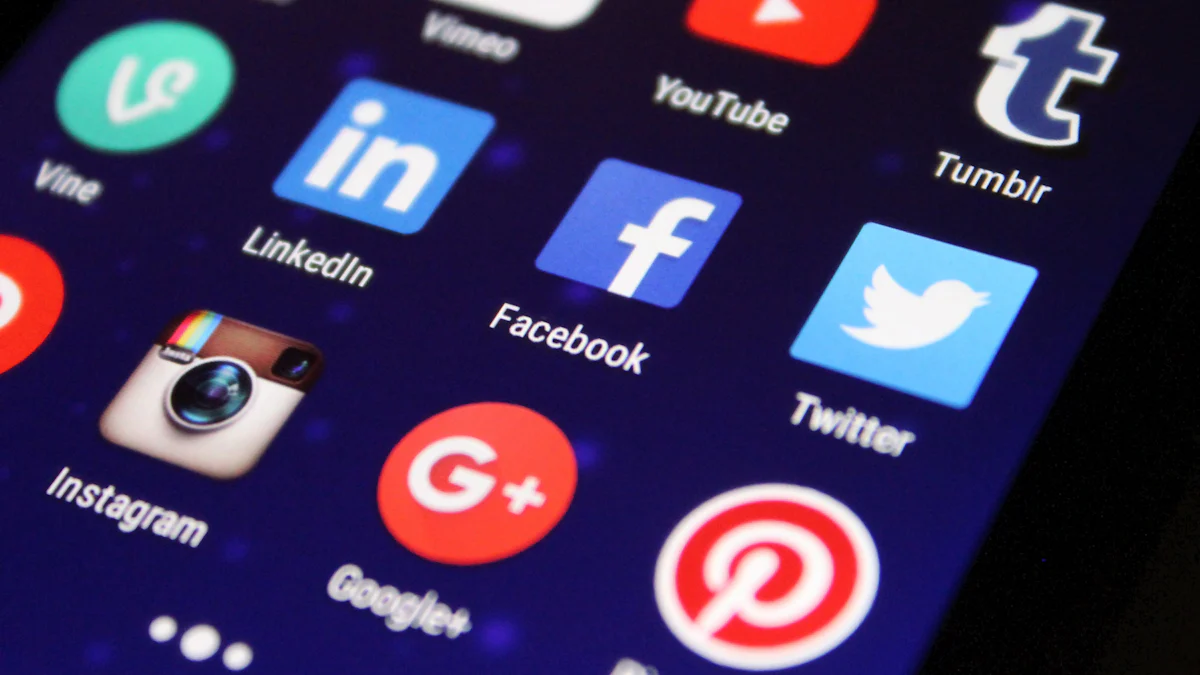Top Influencer Analytics Platforms to Explore in 2025

In today’s fast-paced digital world, influencer data analytics has become a game-changer for brands. With influencer marketing budgets expected to hit $9.29 billion in 2025, you can’t afford to rely on guesswork. These tools help you identify the right influencers, measure campaign ROI, and track engagement metrics like likes and shares. They also reveal audience preferences, so you can fine-tune your strategies. As more marketers embrace AI and transparency, influencer analytics tools are no longer optional—they’re essential for staying ahead.
What Are Influencer Analytics Tools and Why Are They Important?
Definition of Influencer Analytics Tools
Influencer analytics tools are your go-to resources for making sense of influencer data analytics. These tools help you uncover valuable insights about influencers and their audiences. Here’s how they work:
- They identify the right influencers by analyzing audience demographics, engagement rates, and content themes.
- They measure the ROI of your campaigns, showing how well they align with your business goals.
- They track engagement metrics like likes, comments, and impressions to evaluate content performance.
- They provide audience insights, helping you understand preferences and behaviors to refine your strategies.
In short, these tools simplify influencer campaign management and ensure your marketing efforts hit the mark.
Key Benefits of Using Influencer Analytics Tools
Measuring ROI of Influencer Campaigns
You need to know if your investment in influencer marketing is paying off. These tools let you track campaign performance and connect it to your business goals. By analyzing metrics like conversions and sales, you can see what’s working and what’s not.
Identifying Top-Performing Influencers
Not all influencers deliver the same results. With influencer analytics tools, you can pinpoint who’s driving the most engagement and value for your brand. This helps you focus on partnerships that truly matter.
Optimizing Future Marketing Strategies
Data from past campaigns is a goldmine. These tools give you insights into audience behavior and preferences, allowing you to tweak your strategies for better results. It’s all about learning and improving.
Trends Driving the Need for Analytics Tools in 2025
Increased Focus on Data-Driven Marketing
Data is king in 2025. Brands are moving away from guesswork and relying on influencer marketing tools to make informed decisions. Advanced analytics provide real-time insights, helping you optimize campaigns on the fly.
The Rise of Micro and Nano Influencers
Smaller influencers with niche audiences are taking center stage. They bring authenticity and community engagement to the table. Analytics tools are evolving to measure their impact effectively, from engagement rates to conversions.
Growing Demand for Transparency in Influencer Marketing
Consumers want honesty, and so do brands. Transparency is key in influencer marketing. Tools now offer detailed reports on campaign performance, ensuring you know exactly where your money is going.
AI is also playing a big role. It’s streamlining workflows and automating tasks, making influencer management platforms even more essential for success in 2025.
Top Influencer Analytics Platforms for 2025

Upfluence
Key Features
Upfluence stands out as one of the most versatile influencer marketing tools available. Its features are designed to simplify your workflow and maximize campaign efficiency:
- Relationship management tools to track communication and maintain long-term partnerships with influencers.
- Real-time performance metrics to monitor campaign success and adjust strategies instantly.
- Integrated payment processing to streamline influencer compensation.
- E-commerce integrations with platforms like Shopify and WooCommerce for seamless operations.
- Automation tools that handle repetitive tasks, freeing up your time for strategy and creativity.
Unique Strengths
Upfluence excels in influencer audience analysis, helping you identify influencers whose followers align with your brand’s target market. Its e-commerce integrations make it a perfect fit for brands looking to merge influencer marketing with online sales. If you’re seeking an all-in-one influencer marketing solution, this platform delivers.
AspireIQ
Key Features
AspireIQ focuses on building strong relationships with influencers. It offers tools for managing influencer collaborations, creating engaging content, and tracking campaign performance. The platform also provides user-friendly analytics to help you set and achieve custom campaign goals.
Unique Strengths
AspireIQ shines in its ability to foster collaboration. It simplifies communication between you and your influencer partners, making it easier to align on goals and expectations. Its intuitive analytics tools ensure you can monitor progress without feeling overwhelmed. If you value relationship-building in influencer marketing, AspireIQ is a top choice.
Traackr
Key Features
Traackr offers a comprehensive suite of tools to optimize your influencer campaign management. It includes influencer discovery to vet creators based on audience demographics and engagement rates. You’ll also find relationship management features, campaign organization tools, advanced analytics, and social commerce capabilities to measure sales impact.
Unique Strengths
Traackr’s strength lies in its holistic approach. It doesn’t just help you find influencers; it ensures every aspect of your campaign is organized and measurable. Its social commerce tools are particularly useful for brands focused on driving sales through influencer marketing. If you want a platform that covers all bases, Traackr is worth exploring.
HypeAuditor
Key Features
HypeAuditor is a powerhouse when it comes to influencer marketing tools. It offers a wide range of features tailored to meet your needs in 2025:
- Influencer discovery with a database of over 173.5 million creators, complete with filters for audience demographics and engagement metrics.
- Fraud detection to identify fake followers and engagement, ensuring influencer verification.
- Audience analysis that provides insights into an influencer's audience demographics and interests.
- Campaign management tools, including bulk invites and automated contracts, to simplify influencer collaborations.
- Analytics and reporting for detailed performance metrics.
- Competitor analysis to benchmark your campaigns against others in your industry.
- Integration capabilities with platforms like Shopify and Magento for seamless operations.
Unique Strengths
HypeAuditor stands out for its focus on transparency and accuracy. Its fraud detection system ensures you work with genuine influencers, protecting your investment. The platform’s audience analysis tools help you dive deep into influencer audience analysis, so you can find creators who truly align with your brand. If you’re looking for influencer analytics tools that prioritize data integrity and actionable insights, HypeAuditor is a top contender.
CreatorIQ
Key Features
CreatorIQ is a robust influencer marketing solution designed to handle every aspect of influencer campaign management. Its standout features include:
- Customizable reporting and real-time performance metrics to track campaign success.
- A centralized hub for team collaboration, making influencer collaborations seamless.
- White-labeling options and payout tools for professional and scalable solutions.
- Direct communication with influencers to streamline partnerships.
- An intuitive design that’s easy to navigate, even for beginners.
Unique Strengths
CreatorIQ excels in simplifying complex processes. Its customizable reports and real-time data give you the power to make informed decisions quickly. The platform’s centralized hub fosters teamwork, ensuring everyone stays on the same page. Users also rave about its onboarding process and customer service, which make transitioning to this platform a breeze. Whether you’re managing a small campaign or scaling up, CreatorIQ has the tools to support your goals.
Honorable Mentions
BuzzSumo
BuzzSumo is perfect for content-driven campaigns. It helps you discover trending topics and top-performing influencers in your niche.
Pallyy
Pallyy is a budget-friendly option for small businesses. It offers scheduling tools and basic analytics to manage influencer collaborations effectively.
Social Status
Social Status focuses on detailed reporting. It’s ideal if you want to dive deep into campaign analytics and measure ROI.
Heepsy
Heepsy specializes in influencer discovery. It’s great for finding micro and nano influencers with authentic engagement.
Brandwatch
Brandwatch combines social listening with influencer marketing tools. It’s a great choice for brands that want to monitor trends and track influencer impact.
How to Choose the Right Influencer Analytics Tool

Assessing Your Budget
Before diving into influencer analytics tools, take a moment to evaluate your budget. Start by asking yourself: What’s the scale of your influencer marketing campaigns? If you’re running large-scale campaigns, investing in a comprehensive tool might be worth it. For smaller campaigns, focus on tools with essential features.
Here’s a quick checklist to guide you:
- Identify your campaign goals. Are you aiming for brand awareness, conversions, or both?
- Pinpoint your current pain points in analytics. Do you struggle with tracking ROI or finding the right influencers?
- Compare pricing models. Some tools charge a flat rate, while others use subscription-based or pay-per-campaign pricing.
- Test free trials or demos. This helps you evaluate usability and ensure the tool aligns with your budget.
By balancing your needs with your budget, you’ll avoid overspending while still getting the features you need.
Evaluating Key Features
Metrics and Reporting Capabilities
The right tool should offer robust metrics and reporting features. Look for tools that automate repetitive tasks like influencer outreach and performance tracking. Social listening is another must-have. It helps you monitor conversations and trends related to your brand.
Here’s what to prioritize:
- Tools that simplify influencer identification with advanced search filters.
- Campaign management features to plan, execute, and monitor campaigns seamlessly.
- Detailed performance analytics, including engagement rates, conversion metrics, and ROI.
These features ensure you can measure success and make data-driven decisions for future campaigns.
Integration with Other Marketing Tools
Integration is a game-changer. Many influencer management platforms now connect with tools like Shopify, Magento, and CRM systems. This creates a seamless workflow, from influencer discovery to ROI tracking. For example, GRIN combines campaign management and analytics, making it easier to align influencer marketing with your broader strategy.
With 76% of brands planning to increase their influencer marketing budgets, integration ensures you maximize efficiency and stay ahead of the competition.
Considering Usability and User Experience
A tool’s usability can make or break your experience. Choose platforms with intuitive interfaces that save time and reduce frustration. Scalability is another key factor. As your campaigns grow, your tool should adapt to handle increased demands.
Here’s what to look for:
- User-friendly dashboards that are easy to navigate.
- Comprehensive onboarding and training resources to get your team up to speed.
- Reliable customer support to address issues quickly.
Don’t forget to test the tool with a trial run. Simulate a real campaign to verify data accuracy and ensure the tool meets your expectations.
Ensuring Scalability for Future Growth
When choosing an influencer analytics tool, you need to think long-term. Your campaigns might start small, but as your brand grows, your needs will expand. A scalable tool ensures you won’t outgrow its capabilities.
Look for platforms that can handle increasing data volumes and more complex campaigns. For example, if you plan to work with hundreds of influencers in the future, the tool should support bulk management features. It should also offer advanced analytics to process larger datasets without slowing down.
Another thing to consider is the platform’s ability to integrate with other tools. As your marketing stack evolves, seamless integration will save you time and effort. Many tools now connect with e-commerce platforms, CRMs, and social media management software. This makes it easier to manage everything in one place.
Scalability isn’t just about features. It’s also about customer support and updates. Choose a tool that offers regular updates to keep up with industry trends. A responsive support team can also make a big difference when you’re scaling up.
By planning for growth now, you’ll avoid the hassle of switching tools later. A scalable solution ensures your influencer marketing efforts stay efficient and effective, no matter how big your campaigns get.
Reading Reviews and Seeking Recommendations
Before committing to a tool, take some time to read reviews and ask for recommendations. This step can save you from costly mistakes and help you find a platform that truly fits your needs.
Reviews give you a glimpse into real user experiences. They highlight strengths and weaknesses you might not notice during a demo. To make this process easier, here’s a quick table of tips for selecting influencer analytics tools:
| Tips for Selecting Influencer Analytics Tools |
|---|
| Identify your goals and objectives for your influencer campaigns |
| Assess your budget and the pricing models of different tools |
| Evaluate the user interface and ease of use of each tool |
| Read reviews and compare features across different tools |
You should also take advantage of free trials and demos. These let you test the tool’s features and usability before making a decision. It’s a great way to see if the platform aligns with your workflow and budget.
Don’t forget to ask colleagues or industry peers for recommendations. They might have insights into tools that worked well for them. By combining reviews, demos, and recommendations, you’ll make a more informed choice. This ensures you pick a tool that supports your influencer marketing goals and delivers real value.
Influencer analytics tools are game-changers for marketing in 2025. They help you identify the right influencers by analyzing audience demographics and engagement rates. You can measure campaign ROI, track engagement metrics like likes and reach, and gain insights into audience behavior. These tools ensure your campaigns stay effective and authentic by detecting fake followers and providing detailed performance data.
With 73% of consumers trusting influencer recommendations over traditional ads, choosing the right tools is critical. Platforms like Upfluence and HypeAuditor can help you create campaigns that drive results. Explore the options, test their features, and find the one that fits your needs.
Staying ahead in influencer marketing means embracing data-driven strategies. The right tools empower you to build authentic connections, boost engagement, and achieve your goals. Start now and set your brand up for success!
FAQ
What are influencer discovery tools, and why do you need them?
These tools help you find influencers who align with your brand. They analyze audience demographics, engagement rates, and content themes. Using them saves time and ensures you partner with creators who can boost your social media engagement and campaign success.
How do analytics platforms improve influencer campaign performance?
They provide real-time data on metrics like engagement, conversions, and ROI. This helps you identify what’s working and what’s not. With these insights, you can optimize campaigns and make smarter decisions to achieve better results.
Can these tools track influencer engagement effectively?
Yes, they track likes, comments, shares, and other interactions. This data shows how well influencers connect with their audience. It also helps you measure campaign performance tracking and refine your strategies for future campaigns.
Are these tools suitable for small businesses?
Absolutely! Many platforms offer scalable solutions for businesses of all sizes. Whether you’re running a small campaign or managing multiple influencers, these tools can simplify processes and provide valuable insights without breaking the bank.
How do these tools ensure transparency in influencer marketing?
They offer detailed reports on campaign performance and audience authenticity. Some even detect fake followers or fraudulent activity. This ensures your investment goes toward genuine influencers and measurable results.
See Also
Top 10 Tools for Discovering Influencers in 2024
Exploring Key Features of Leading Influencer Platforms
Leveraging Data Analytics Influencers for Career Growth in 2025
Best AI Tools for Predictive Analytics in 2025
Five Essential Steps for Calculating Influencer Marketing ROI
